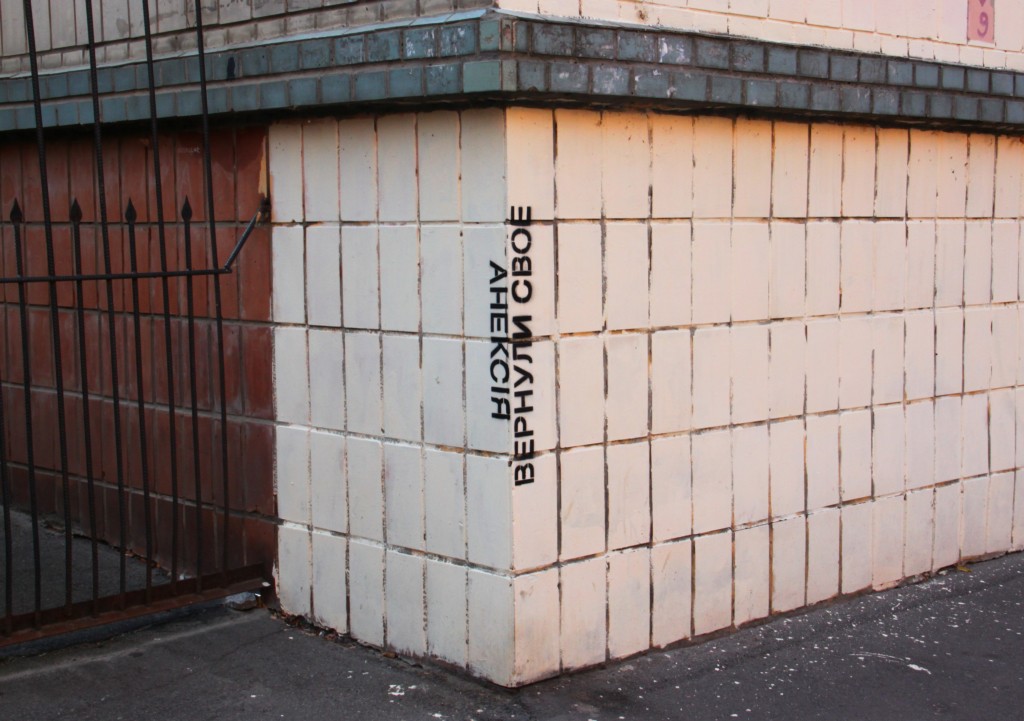A Moscow street artist’s project in Kyiv, intended to promote a peaceful dialogue between Ukraine and Russia, has instead caused an angry outcry from some residents of the Ukrainian capital.
On Oct. 24 Moscow street-artist Stanislav Komissarov, who goes by the name Slava Ptrk, announced on social media the completion of his art-project in Kyiv, immediately provoking an angry reaction from many Ukrainians.
The project is a part of the “Creative Peacebuilding” program, launched by the German-Russian Dekabristen Society, which according to its website will “use art as a tool for dialogue in regions with unresolved territorial, ethnic or religion conflicts.”
Komissarov said there was a need for Ukraine and Russia to agree on the terms used to describe various events in Russia’s war on Ukraine, otherwise “there will be no peace or dialogue.”
He stayed in Kyiv for a week in mid-September and painted 12 pieces of graffiti in various parts of Kyiv, each repeated 3-4 times. The paintings feature contrasting words and phrases, including “ATO” and “punitive operation”, “annexation” and “we returned what belongs to us” (referring to Crimea), “decommunisation” and “vandalism,” and the most controversial one – “Buk missile system” and “Su-25.”

“Annexation” and “We returned what belongs to us” is written on the wall in Kyiv. (slavaptrk.com)
After the shooting down of Malaysia Airlines Flight MH17 in eastern Ukraine on July 17, 2014, Russia’s state-controlled media promoted the theory that a Ukrainian Su-25 warplane had shot down MH17. The theory has since been proved false by the Dutch-led criminal investigation into the MH17 tragedy.
According to the Dekabristen website, the “Creative Peacebuilding” program is supported by the German Foreign Ministry. However, Komissarov said he did not discuss with his backers what exactly he would do, as he had no definite plan until he actually reached Kyiv.
Among the Ukrainians angered by the street art was Svitlana Osipchuk, a Kyiv historian. She painted over the “Buk/Su-25” painting, which she announced in her online blog Mist Patona:
“It is no secret I was traumatized by the MH17 news when it emerged. … (When I saw photos of the “Buk/SU-25” painting) in just a couple of hours I went to an art store and commenced my first very own art-project,” Osipchuk said.
Many supported the historian, one person commenting: “Well done! I saw this project online and I was annoyed by the word ‘dialogue’ that was used to label it.”
Komissarov said he had not known the results of the MH17 criminal investigation as “they were announced on the day he did the painting.” He said that if he had known them, he would have “altered the idea, or abandoned it altogether.”
He added that the Buk missile system and Su-25 theories of the shooting down of MH17 are two types of propaganda, although “one is closer to the truth, and the other is further.”
